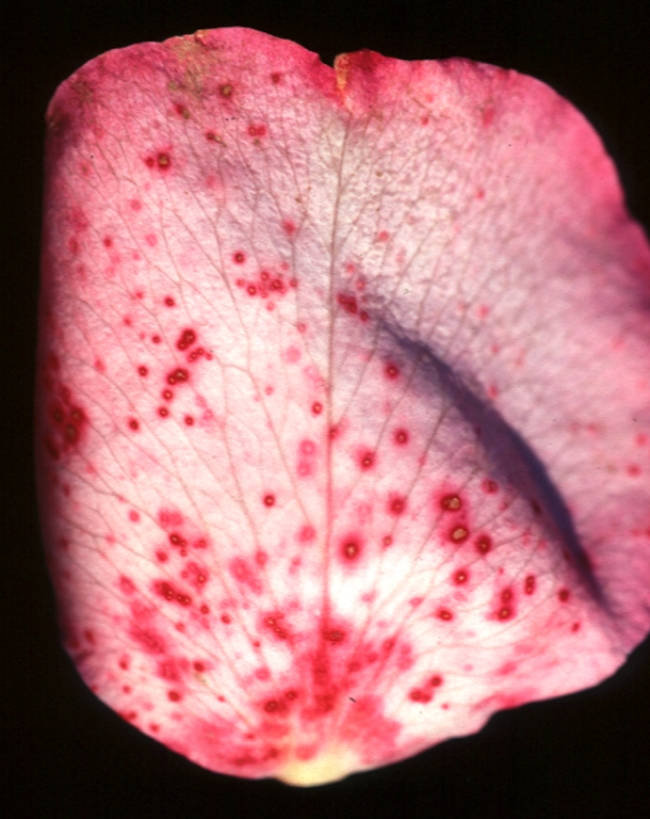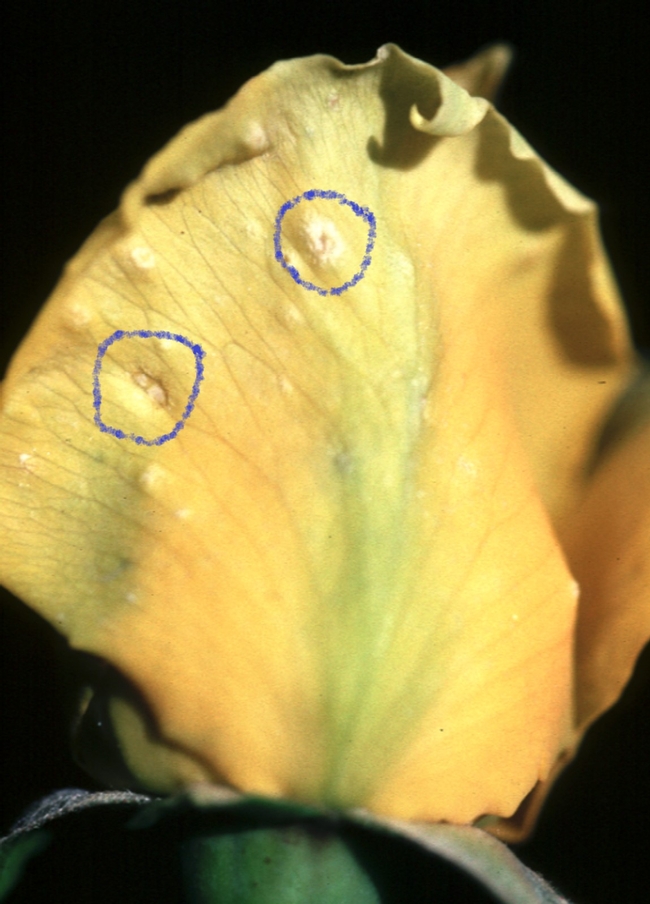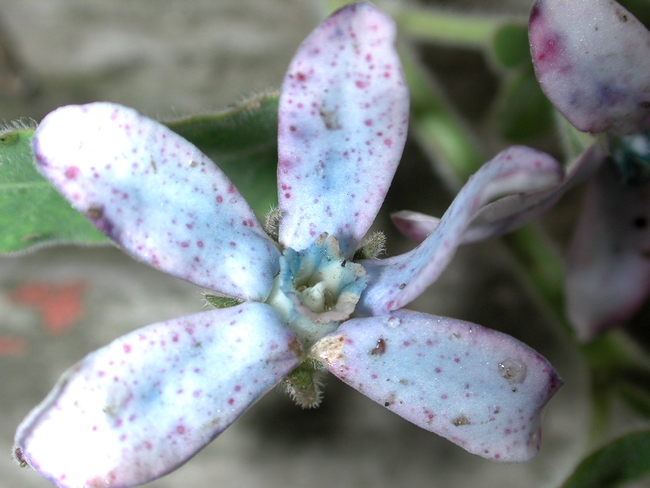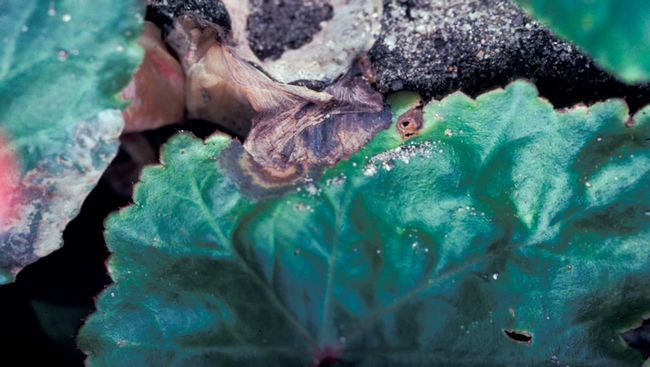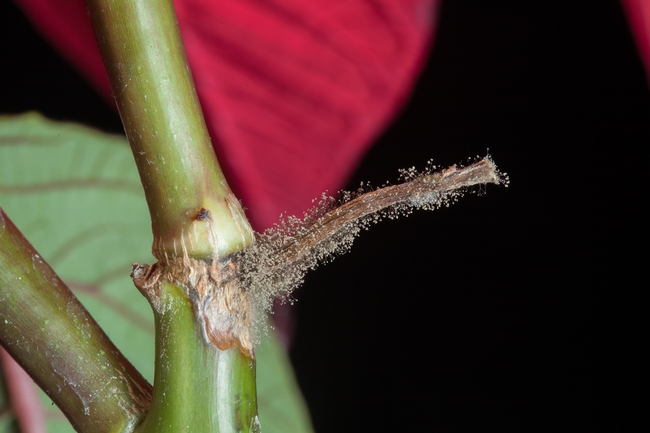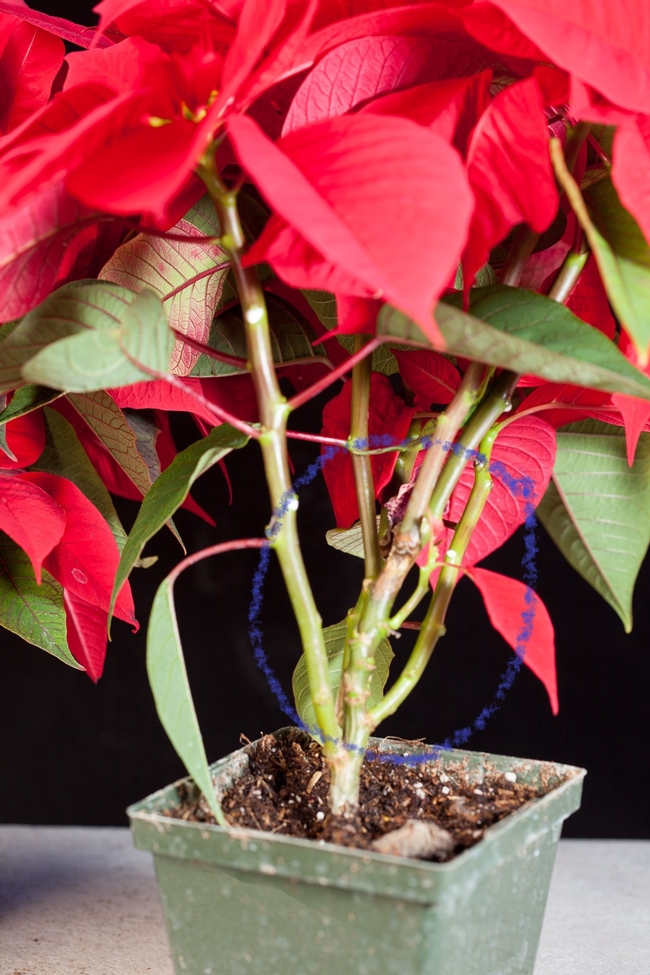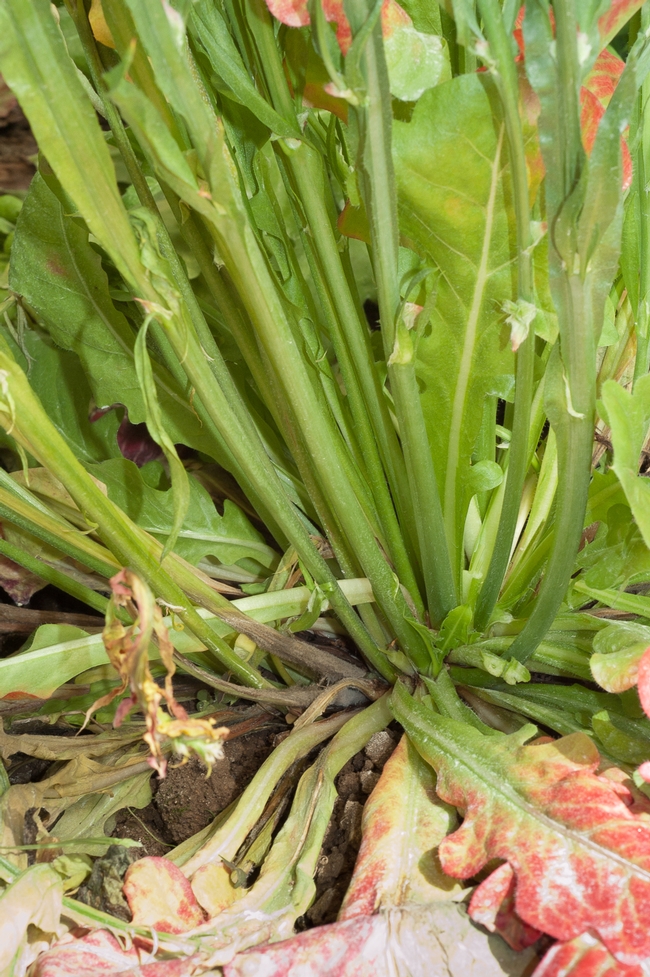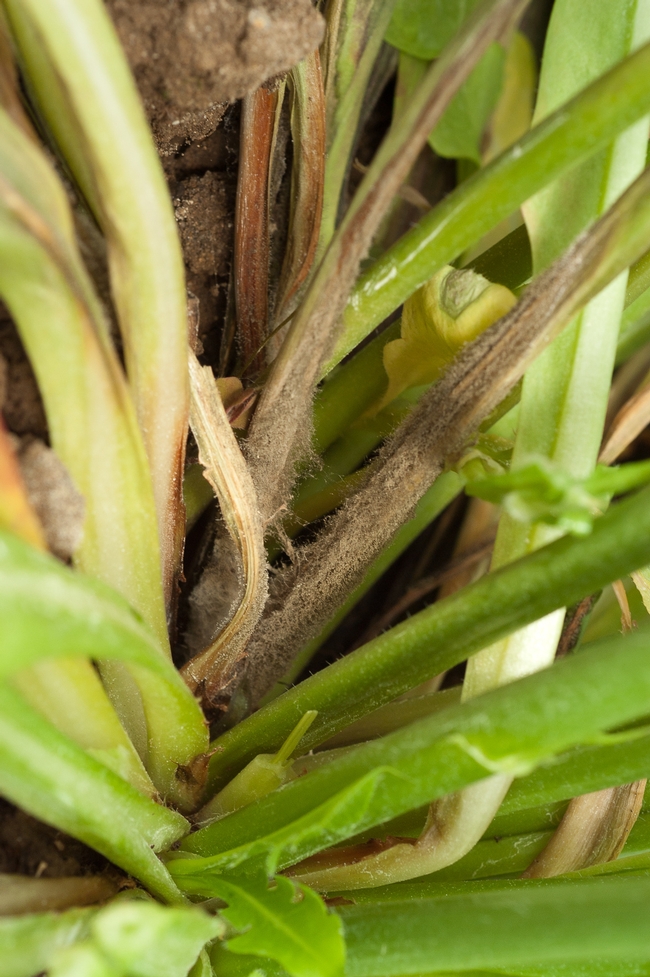Gray mold caused by the fungus Botrytis cinerea is one of the more destructive plant pathogens, and it attacks a wide variety of plants. It is a common springtime disease, favored by cool rainy periods and high humidity. Conditions just like we have seen in California recently. Under these conditions, the fungus may sporulate on infected tissues and produce masses of characteristic gray or brownish spores that become airborne and spread.
Spores must have moisture—from rainfall, morning dew, or irrigation-- to germinate and infect plant tissue. Flower petals and ripening fruits and vegetables are particularly susceptible to infection. Botrytis can directly attack the flowers of roses and many other cut flowers in the greenhouse, and it can even develop, although slowly, at refrigeration temperatures during shipment.
Young, weak, or dead leaves and stems may become infected. Even seeds and seedlings may be attacked and killed. It often limits the productive life of flowers, vegetables, and fruit at the end of their growing cycle in the fall.
Once healthy flower petals or dead, dying, and damaged stem and leaf tissues are colonized, this diseased tissue can be used as a launching pad for the fungus to develop into mature healthy tissue. For example, under conducive environmental conditions, a necrotic tuberous begonia flower can become colonized with Botrytis and drop onto a perfectly green and healthy mature leaf and begin a new infection that can colonize the leaf.
Another example is when Botrytis colonizes a broken or pruned stem, and then Botrytis develops into the attached mature stem, where it normally could not directly infect. In this example with poinsettia, a broken leaf left a stub of dying tissue that became infected, and this stub became the launching pad for the Botrytis to enter the main stem. This led to a serious stem canker and blight, and all plants infected this way needed to be rogued from the crop.
Another example is seen below where annual statice (Limonium sinuatum) was grown for cut flower production. The plants were densely grown in a greenhouse with chronic high humidity and poor air circulation. When flowers were cut, long stubs were left behind near the crown of the plant. The cut stubs became infected and then moved into the young petioles of nearby leaves.
Spores may readily develop in decaying vegetation and old flowers, so removing old flowers before they become infected and function as spore sources or launching pads for infection of nearby healthy tissue is important. Have good air circulation in greenhouses to reduce condensation and wetness. See https://ucanr.edu/blogs/blogcore/postdetail.cfm?postnum=28597
Botrytis can form black hardened resting structures called sclerotia in decaying plant matter, which allows for survival during adverse conditions; so remove and dispose fallen leaves and debris around plants. Prune out any dying tissue.
Avoid overhead watering; drip irrigation or hand watering is best to keep water off flowers and foliage. Irrigate early in the day so that the foliage can dry as rapidly as possible. Maximize the period between irrigations to further enhance drying of foliage and flowers. There are many fungicides that help protect against infection. They can be used during periods that are conducive to infection. Be careful to rotate fungicide classes because Botrytis cinerea is known for its ability to mutate to resistant strains.
